
The unique geographical location of Egypt, at the northeast corner of the African continent, where it joins with Asia, coupled with the fact that it is bordered by the Mediterranean Sea to the north and the Red Sea to the east, endows it with a rich natural heritage.In a bid to take action to conserve and preserve its biodiversity, flora and fauna, Egypt passed law 102/1983, which empowered the Prime Minister of the country to designate certain areas to be declared as protectorates. To date, 28 protectorates have been declared, ranging from coastal, wetlands, geological and coastal protectorates.
Ras Muhammad National Park
Ras Mohamed was the first declared protected area in Egypt in 1983. It lies at the southern-most tip of the Sinai Peninsula, overlooking a panoramic view of the Gulfs of Suez and Aqaba. A diversity of shoreline configurations and coral reef ecosystems that are internationally recog-nized as some of the world’s best make up a small part of the park’s beauty, which also features mountains, valleys, gravel plains and sand dunes. In addition, more than 1,500 marine creatures can be found, which is why the park is a famous snorkeling and diving site. Ras Muhammad is located about 20 km from Sharm, and 446 km from Cairo. There is only one place in Ras Mohamed where camping is admitted but visitors must get a permit from the Park Management located at the entrance.

Zaranik
Zaranik Protected Area is located at the eastern end of Lake Bardawil on the Mediterranean coast of Sinai and was declared a protected area in 1985.It is bordered on the north by the Mediterranean, on the south by Qantara – El Arish road, and on the east by a huge compound of tourist development areas where one can find comfortable accommodation.The area is characterized by amazing flora and fauna, which includes rare species (up to 270), as well as migra-tory birds. It is located around 30 kms east of the town of El Arish and 300 km from Cairo, and can be reached by road. There are several budget campsites and some double rooms. Binoculars and telescopes are available for rent at the site.

Al Ahrash
Al Ahrash Reserve lies in the northeast corner of Egypt, bordering the huge expanded area of sand dunes that reach 60 meters in height above sea level.The reserve is famous for its trees and plants, which densely cover the reserve, making it a natural and serene haven. Numerous acacia trees, various camphor trees, bushes and pastoral plants can be found there.Located between El Arish and Rafah cities in Northern Sinai, it can be reached by road from these cities.

El Omayed
This relatively small area of the Mediterranean coastal desert is characterized by the richest and most diverse flora in Egypt. Dunes of white sand by the sea are followed further inland by limestone ridges separated by depressions, some of which contain salt marshes. It is the only protected area that has this type of habitat.Many birds migrate through in spring and autumn, provid-ing excellent bird watching opportunities. El Omayed is easily accessible from Alexandria, as well as the governorate of Matrouh.
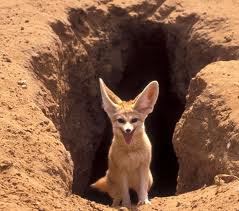
Elba Protectorate
The Elba Protected area is an extensive and complex area comprised of a number of mangroves of the Red Sea, islands, coral reefs, coastal sand dunes, salt marshes, desert plains and a cluster of coastal mountains (Gabel Elba, Gabel Ebruq and Al Daeeb).
Gabel Elba is the only igneous mountain rising up to 1,437 meter. Its summit is a “mist oasis” where a considerable portion of the precipitation is contributed in the form of dew and clouds, creating a unique and rare ecosystem not found anywhere else in Egypt.
Some 458 species are known in the reserve. Gabel Elba also supports a rich faunal diversity unparalleled in any other desert environment in Egypt. Forty species of birds and twenty-three species of mammals including the endangered sea cow Dugong – and thirty species of reptiles are found here.It is located in the south-eastern part of the eastern desert. The distance from Cairo is around 1300km and there are many resorts around the area where visitors can stay.

Salouga and Ghazal
The two islands of Salouga and Ghazal in the River Nile are located north of the High Dam. You can also visit the islands of Asbournati and Amoun and the plantation garden at Aswan, which are all located north of the reserve vicinity.
The reserve area is characterized by predominantly expanding bushes and 94 various kinds of plants. The favorable natural conditions in the area provides wildlife spotting opportunities, with 60 kinds of rare birds, as well as migrating birds. The two islands are about 3 kms north of the Aswan Dam. You can reach the islands from Aswan or from Cairo (a 7-8 hour drive; there is a bus that leaves Cairo daily).

St. Catherine’s National Park
The Park occupies much of the central part of South Sinai, mountainous region, which includes Egypt’s highest peaks St. Catherine’s Mountain – a favorite of many climbers Moses, Serbal, Umm Shomer and Tarbush mountains.Around 1,000 plant species, representing almost 40% of Egypt’s total flora are found in this region. Half of the 33 known Sinai endemics are also found in St. Catherine area. The white-crowned Black wheatear is very characteristic of the area. There are 46 reptile species,15 of which are found nowhere else in Egypt such as the Endemic Sinai Banded Snake and the Innes Cobra, which is considered to be very vulnerable to extinction. The Saint Catherine National Park abuts the coastal reserves of Ras Mohammed National Park, the Nabq and Ras Abu Galum Managed Resource Areas that lie along the Gulf of Aqaba. The coastal resorts, a mainstay of the Egyptian economy, are among the fastest growing tourism developments in the world.Many hotels are available for accommodation in the South of Sinai, as well as, around St. Catherine’s

Lake Qarun
Lake Qarun lies in the Fayoum Province, an easy drive from Cairo. A gently sloping sand-plain extends from the lake shore northwards and upwards to reach sea level at
7 km north of the shoreline. The lake is an important archeological site because of the presence of the numerous marine life with a unique collection of fossil fauna and flora that goes back to some 40 million years.It is well known for wetland of international importance for water birds. The 376-feddan-islet serves as the most convenient spot for bird reproduction, specifically the flamingo. It is also the incubator and the happy nest that embraces infant birds on the lake islets during reproduction time. The reserve contains several monuments including As-Sagha (goldsmiths) palace that lies at the northern part, dating back to the Pharaonic Middle Kingdom. Three km away from As-Sagha palace, lies Abu Lifa Monastery that was built in the monastic era on an elevated spot in the bosom of a mountain to keep monks secure from Roman aggression. Greek monuments include relics of the old town of Skitnopius, once the departure point for the south desert-bound trade caravans.Several eco lodges, as well as two 5 star hotels are avail-able in Fayoum for accommodation.

Wadi El Rayan
The Wadi El Rayan depression is located in the western desert of Egypt, about 65 km southwest of the town of El Fayoum and 80 km west of the Nile River. The vegetation is confined to inter-dune areas around springs and at the base of large dunes, and covers 13 species of plants. It is especially important, as it is home to the world’s only known population of the endangered Slender horned Gazella leptoceros. The Dorcas Gazelle is still found in the area in small numbers, as well as, the Fennec Vulpes zerda and Sand Fox.

Wadi El Allaqi
Wadi El Allaqi is a valley formed by the drying up of a large river, 275 km in length with an average width of 1 km. Home to more than 90 species of annual and perennial plants, it also includes fifteen species of mammals, 16 species of birds, a few venomous reptiles, and a large number of invertebrates. The valley is easily accessible from Aswan.

Wadi El Assiuti
The Assuiti Valley starts in the form of tributaries, mostimportant of them are the areas south of Qena Valley and up north. The Valley reserve differs from other Egyptian reserves as it is the sole station for breeding wild animals and wild plants endangered by extinction.

El Hassana Dome
The reserve is situated at Abu Rawash on Cairo-Alexandria desert road, about 8 km from Giza pyramids.El Hassana Dome, with its topographical merits and geological make-up, reflects a distinguished history. It is the sole location near Cairo that features remnants from the Higher Crestaeceous age, that dates back to about one million years. Its surroundings of rocks are from the Stone Age that were formed about 60 million years ago and the Rocky Age dating back to 40 million years ago.

The Petrified Forest
In 1989, the area outside of Maadi (30 kms from Cairo’s downtown), known as the Petrified Forest, was declared a protectorate by Prime Ministerial decree. Roughly 35 mil-lion years old, the Petrified Forest is an astounding piece of the earth’s physical history. The six-kilometer expanse is strewn with the remains of trees from an early forest, which were washed to their current location by flooding from the Red Sea hills. The period in which this flooding and move-ment occurred is known as the Oligocene, when the Earth’s overall temperature experienced a great deal of cooling. What makes this period particularly unique is that the global cooling that occurred in it created an atmosphere that brought about the appearance of many new species, such as horses and elephants.

Sannur Valley cave
Sannur valley cave reserve is located in Beni-Suef, 10 km southeast of the city.
Due to the ongoing alabaster drilling operations, 54 big cavities leading to the caves in the bottom of the earth were discovered. They contain geological formations known as ups and downs. The most important feature is the quality of its natural formations that are the most rare in the world. They also represent an importance to researchers for conducting detailed comparative studies with regard to variations of ancient environmental conditions.

Nabq
The largest coastal protected area on the Gulf of Aqaba, Nabq contains a variety of ecosystems in the Sinai Peninsula. With an area of over 600 kilometers square, Nabq contains 134 plant species, 6 of which are found only in Nabq, and the largest single stands of Arak bushes in the Middle East. Gazelles, Nubian Ibex, Hyrax and small mammal populations inhabit the adjacent desert. Herons, Spoonbills and Ospreys have sustainable breeding populations in and around the mangroves. Nabq (which is near Sharm El Sheikh resort), is an amazing site for diving and snorkeling as the coral reefs are extremely rich there. Reef profiles and therefore community structure are different from reefs in the Ras Mohammed National Park.

Abu Gallum
Abu Gallum is one of south Sinai’s best-kept secrets and is considered among the most picturesque protected areas in Egypt. Its spectacular granite mountains ending abruptly
on a narrow coastal plain, fronted by rich coral reefs makes it a worthwhile visit. Abu Gallum reserve houses 167 plant species, 44 of which are seen only in this area.You can trek to Abu Gallum from the Blue Hole camp in Dahab, which should take you about an hour. You can also enjoy a camel ride to Abu Gallum, which can be rented, along with a guide from the Blue Hole. If you opt to drive to Abu Gallum, the ride will take you two hours from Dahab.

Lake Burullus
Situated northeast of the Rosetta branch of the River Nile, Lake Burullus stretches over 460 square kilometers, and is considered the second largest natural lake in Egypt.The lake has many environmental treasures, most impor-tant being the salt swamps and sand plains, while high sand dunes cover the lake’s coasts. The area features over 135 types of land and water plants. Moreover, the site is a great bird watching location as it is convenient for receiving migrating wild birds.

The White Desert
The White Desert is considered the main attraction of Farafra, and is the second biggest depression by size located in Western Egypt, between Dakhla and Bahariya Oases. Located 45 km north of the town of Farafra, the White Desert has a white, cream color and has massive chalk rock formations that have been created as a result of occasional sandstorms in the area. You can also visit the hot springs at Bir Sitta and the El-Mufid Lake, also located near Farafra.


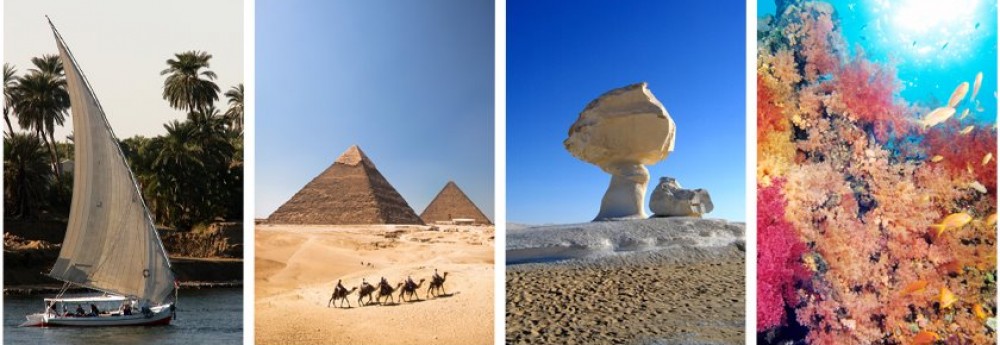









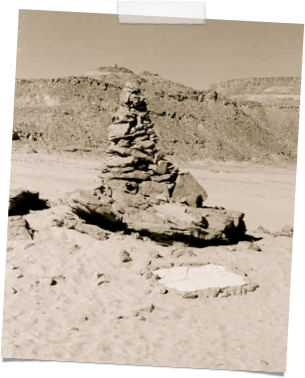
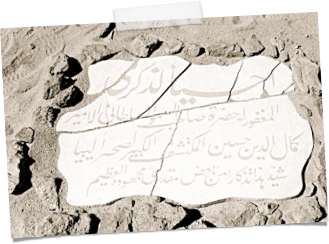
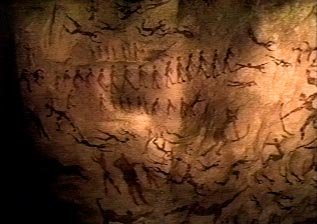
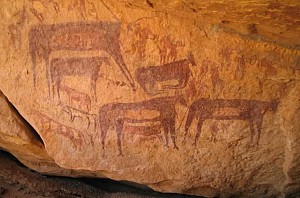

![14__DSC_2768[1]](https://egyptourism.files.wordpress.com/2013/05/14__dsc_27681.jpg?w=584&h=388)
![15__DSC_2858[1]](https://egyptourism.files.wordpress.com/2013/05/15__dsc_28581.jpg?w=584&h=877)
![06__DE0084[1]](https://egyptourism.files.wordpress.com/2013/05/06__de00841.jpg?w=584&h=387)
![11__DSC_2463[1]](https://egyptourism.files.wordpress.com/2013/05/11__dsc_24631.jpg?w=584&h=388)
![00__cu0456[1]](https://egyptourism.files.wordpress.com/2013/05/00__cu04561.jpg?w=584&h=387)
![05__CU0364[1]](https://egyptourism.files.wordpress.com/2013/05/05__cu03641.jpg?w=584&h=387)
![02__DE0081[1]](https://egyptourism.files.wordpress.com/2013/05/02__de00811.jpg?w=584&h=387)
![16__DSC_2927[1]](https://egyptourism.files.wordpress.com/2013/05/16__dsc_29271.jpg?w=584&h=388)
![01__DI0132[1]](https://egyptourism.files.wordpress.com/2013/05/01__di01321.jpg?w=584&h=387)
![10__DSC_2413[1]](https://egyptourism.files.wordpress.com/2013/05/10__dsc_24131.jpg?w=584&h=388)
![13__DSC_2648[1]](https://egyptourism.files.wordpress.com/2013/05/13__dsc_26481.jpg?w=584&h=388)
![12__DSC_2630[1]](https://egyptourism.files.wordpress.com/2013/05/12__dsc_263011.jpg?w=584&h=388)
![07__DSC_1979[2]](https://egyptourism.files.wordpress.com/2013/05/07__dsc_19792.jpg?w=584&h=388)
![08__DSC_2352[1]](https://egyptourism.files.wordpress.com/2013/05/08__dsc_23521.jpg?w=584&h=388)








































